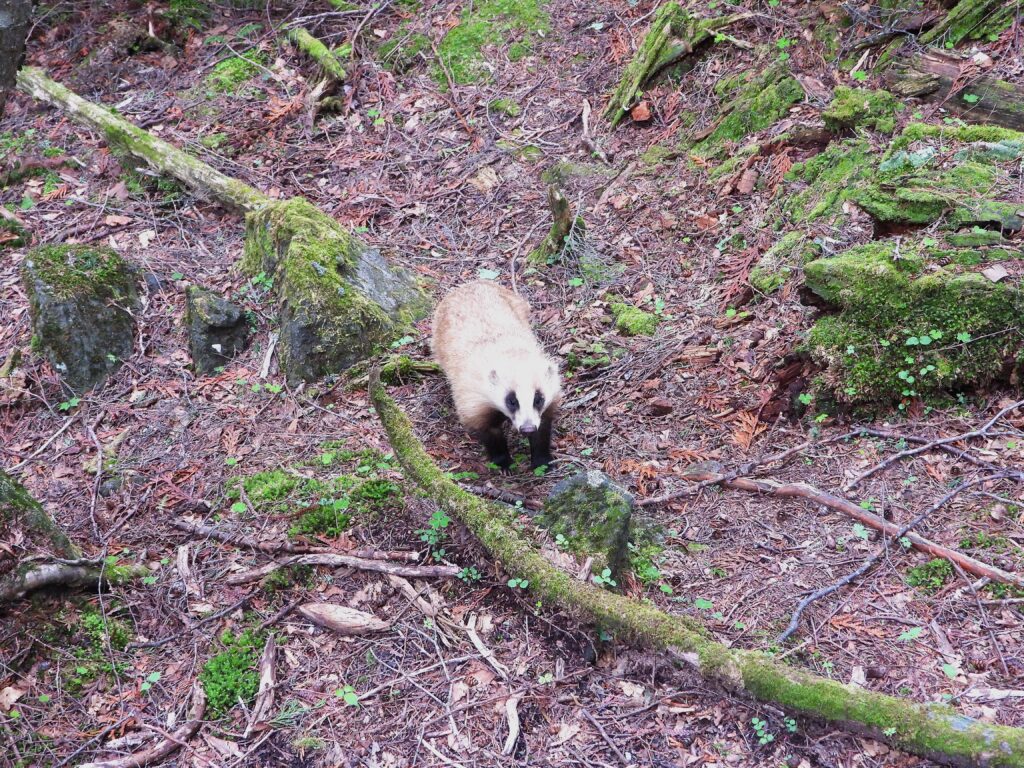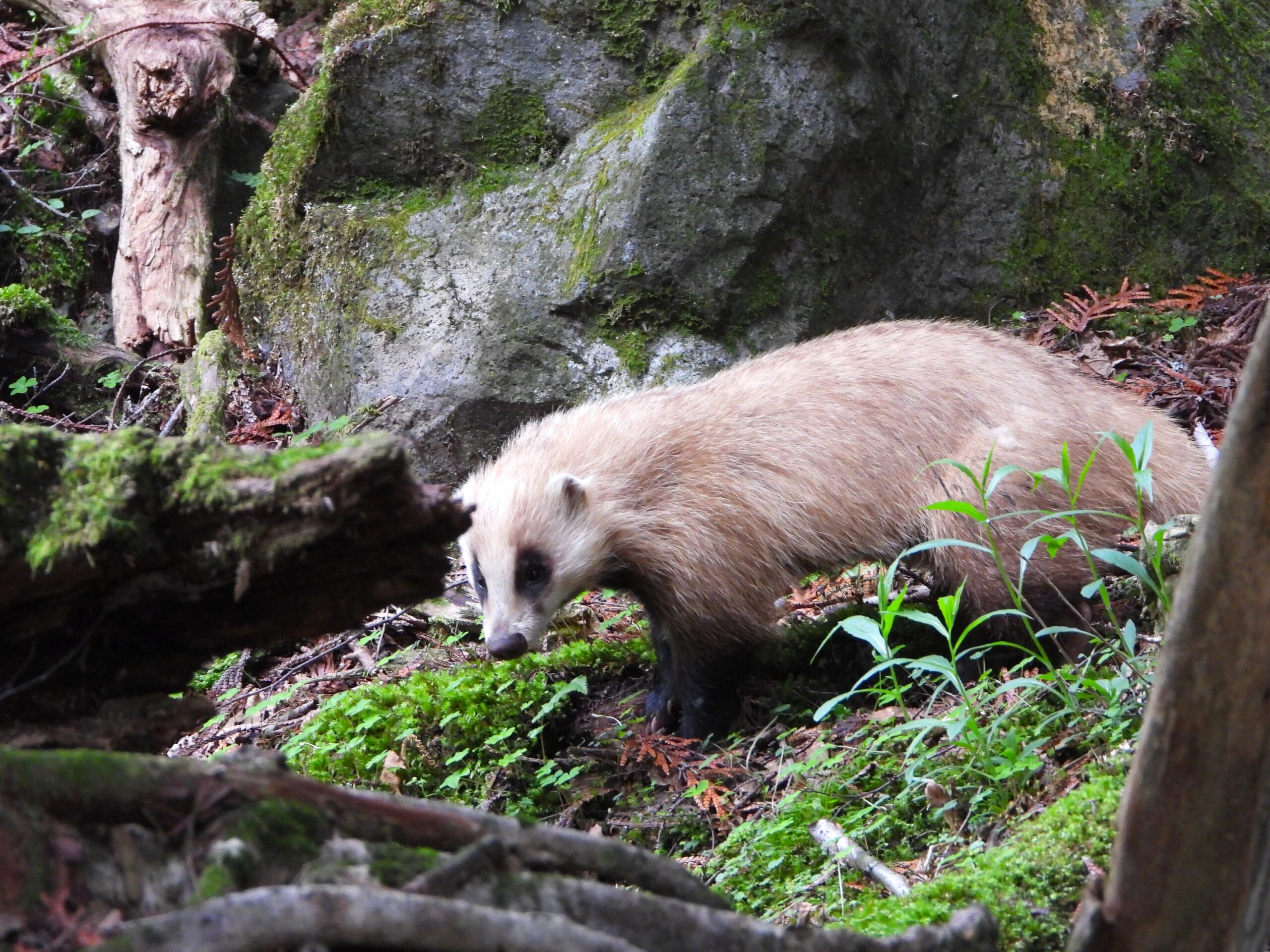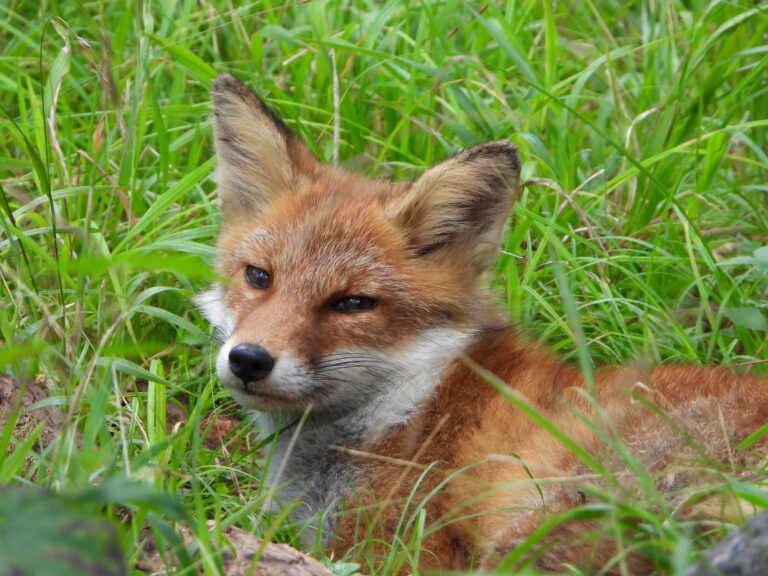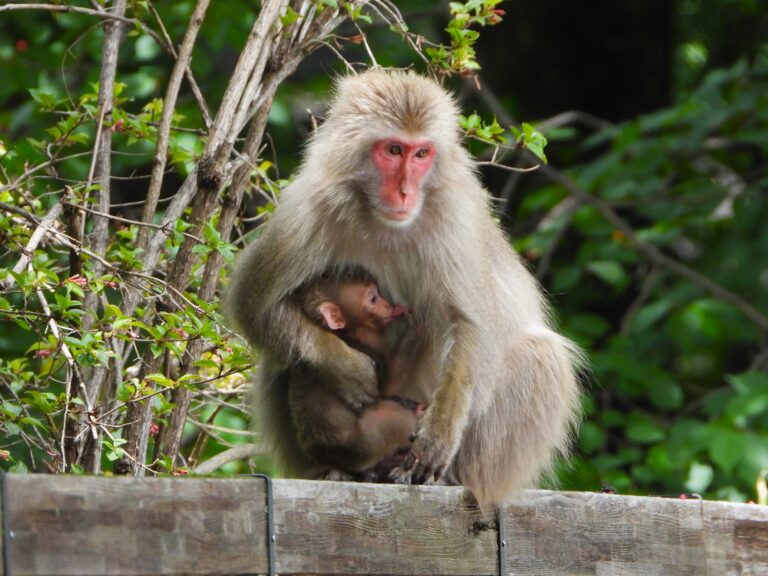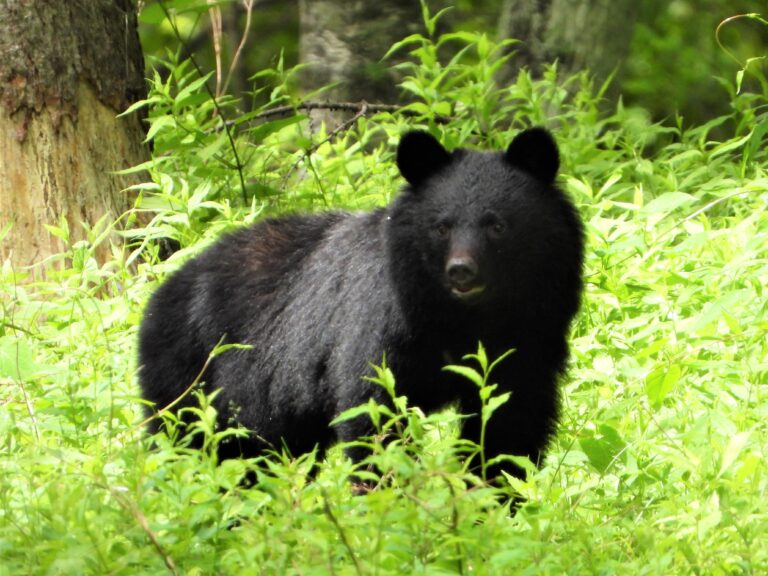Japanese Badger (Meles anakuma) – Wildlife of Japan
Introduction
The Japanese Badger is a stocky, nocturnal mustelid native to Japan. Often mistaken for a raccoon dog at a glance, this species is a powerful digger that engineers underground burrow systems and quietly shapes the forest floor. Encounters are special—and they’re especially likely at night or after rain, when activity and detection chances increase.
Appearance
Adults typically have a head–body length of 50–80 cm, a tail of 14–20 cm, and weigh about 3.9–11 kg depending on season and locality. The coat is coarse gray-brown above with paler underparts. The face shows two dark stripes running from the snout past the eyes, but the mask is softer and less “dog-like” than a raccoon dog’s. The wedge-shaped head, prominent foreclaws, and broad forelimbs are adapted for digging. Sexes are similar.
Habitat
Found across Honshu, Shikoku, and Kyushu (absent from Hokkaido and Okinawa). It favors broadleaf and mixed forests, satoyama mosaics, bamboo groves, hedgerows, and field edges. Setts (burrow complexes) are usually placed on well-drained slopes, banks, or wooded embankments close to cover and foraging areas.
Behavior
Mostly nocturnal and crepuscular. Generally solitary with overlapping home ranges; individuals may reuse long-lived setts over time. Setts can have multiple entrances, sleeping chambers, and shallow latrines nearby along paths. Movement is an efficient trotting waddle; when surprised, a badger may briefly freeze before diving for cover.
Observation tips: Look for fresh diggings and latrines along quiet country lanes and wooded banks. Chances rise on warm, damp nights after rain.
Hibernation
The Japanese Badger is one of the few mammals in Japan known to hibernate. In colder regions, individuals retreat into their setts from around November to March and remain dormant through the winter. In warmer areas, however, hibernation is shorter or may not occur at all, with badgers emerging occasionally during mild spells.
Diet
Omnivorous, with a strong invertebrate focus. Earthworms are a staple. It also takes beetle larvae, ants, snails, fruits (persimmon, berries), nuts (acorns), roots, and occasionally small vertebrates or farm crops. Diet shifts with season and local availability.
Reproduction
Mating typically occurs from late winter into spring and involves delayed implantation. Most cubs are born in spring (typically April–June) deep within the sett. Litters usually contain 2–3 cubs (range 1–4). The young remain underground for several weeks, are weaned by early summer, and then begin accompanying the mother on short foraging trips.
Conservation
Not globally threatened at present, but local pressures include habitat fragmentation, roadkill, and occasional persecution where crop damage occurs. It is legally hunted in parts of Japan under regulated seasons; populations remain stable in many rural and suburban fringes where habitat connectivity persists.
Author’s Impression
The Japanese Badger often seems less cautious than other nocturnal mammals. While foraging along forest roads, it sometimes becomes so absorbed in searching for earthworms that it comes surprisingly close. At times, it even passes right by without noticing me at all. This lack of caution and single-minded focus makes it a truly amusing and fascinating animal to encounter.
